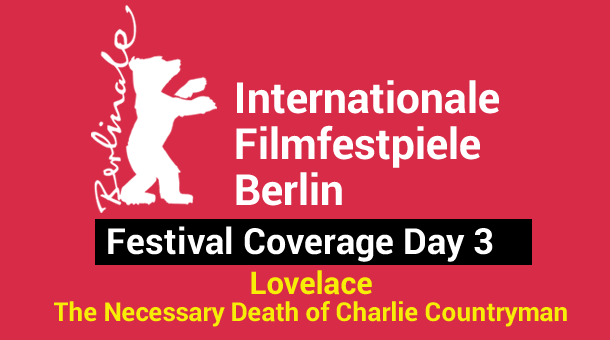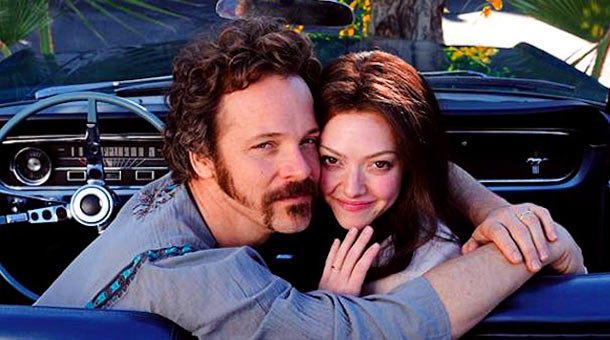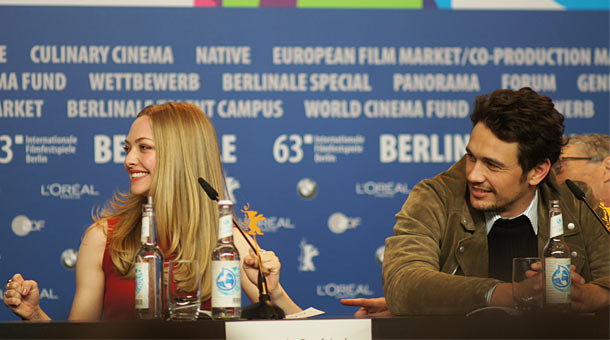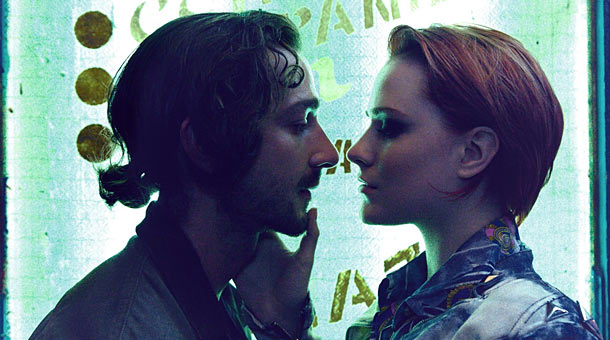2013 Berlin Film Festival Day 3: Lovelace & The Necessary Death of Charlie Countryman

I learned pretty quick the importance of showing up to the press screenings early. I’d heard this advice shortly after checking in and receiving my credentials; but, for my first screening of the festival–after arriving to the theater a good forty minutes before the film–I was told by the door manager that they probably wouldn’t open up until just before the show, and if I got in line five minutes before I would be fine. I half trusted her, went to grab a snack, and returned fifteen minutes before curtain time. The theater doors had already been opened, and nearly all of the seats were occupied. I managed to find a place in the front row, which was far from ideal, but at least it was a seat. Since then I have made a point of arriving a solid thirty minutes ahead.
Sometimes the press is let straight into the theater, but often there is a screening going on prior and we have to wait. Generally I’m not a fan of lines. I doubt if anyone is. However, in an international setting with so many people sharing a common interest in one place, I have yet to find the time spent in line at all terrible. Norwegian journalists specializing in American Pop Culture, German media students, and the occasional Canadian blogger are all just a shout away. Conversation isn’t difficult to initiate; simply turning around and asking where someone is from, if they were at this-or-that press conference, or if they are excited for the screening usually does the trick. The next thing you know you are discussing, debating, and critiquing film with someone from an entirely different corner of the world with a totally different outlook on cinema.
I have made a point of making my program selection as diverse as possible, while still attending the bigger film screenings. Because not everyone is as interested in the big name films from the US, it is typical for conversation to rapidly drift to the smaller, less known films in the festival line up. Coming from the US, I take as much as I can from films that depict a culture I am unfamiliar with, but having the opportunity to discuss the technique and story of a French drama with someone who is more than familiar with the director’s work and the social commentary surrounding a film brings about a whole new understanding and experience from what I initially left the theater with. This being said, if you ever have the opportunity to attend a large festival, pick a film or two that you might not typically watch, and take advantage of the other attendees, because there is always more than one way to experience a movie.
Lovelace

As I mentioned in the last post, the festival this year is presenting a surprising number of films that deal with issues of sex and pornography–more so than ever before, according to one of the festival programmers. Lovelace is one such film that takes a critical look at the porn industry by telling the story of the first real porn star, Linda Lovelace–star of the first real mainstream porn film, Deep Throat; portrayed by Amanda Seyfried. Lovelace takes place in the early and mid–seventies, when the porn industry was just beginning to really take off. The director of the film, Rob Epstein, commented in the press conference on the significance of the time period, stating it was a new age of sexual openness, but sometimes there are unintended consequences that can arise from this new openness.
The story is told twice from two perspectives. First is the story as seen from the outside, as Linda meets, falls in love with, and marries Chuck Traynor–who is responsible for getting her involved in the making of Deepthroat. The story is typical, and while moments might feel somewhat tense or uncomfortable for the characters, the world shown is full of glamour and success. It is an outsider’s view. The story then jumps ahead six years to Linda preparing for a polygraph test, per request of her publisher as she is about to release a book on her experiences. The story returns to the point right after she marries Traynor, and the glamour is replaced with scenes of abuse, domestic violence, and Linda’s struggle to escape the world she has been forced into.
Amanda Seyfried commented that the production of Lovelace was the most fun she has ever had on a set. While the film is serious in nature, it’s not hard to see how she came to this conclusion, as she totally breaks her typical character caste. The blonde, wholesome, heartthrob we typically see her as is replaced with a freckly, brunette, girl-next-door who is forced to function in extremely trying circumstances. The film brings out the full flair of the seventies, including high contrast, high grain film stock, great costumery and set direction, and a fantastic soundtrack. The film also stars a very dark Peter Sarsgaard and a cameo of James Franco as Hugh Hefner.
RATING: 8.7

Amanda Seyfried and James Franco
The Necessary Death of Charlie Countryman

The Necessary Death of Charlie Countryman is the feature debut of Fredrik Bond, who–before this point–has made a name for himself directing Heineken commercials. The film is fairly grandiose in production scale, and features a big name cast including Shia LeBeouf, Evan Rachel Wood, and a post-Harry Potter Rupert Grint.
Filmed on location in Romania, the film tells the tale of Charlie Countryman, who–after the death of his mother, and on the request of a drug-induced vision of her postmortem–takes off for Eastern Europe to find himself. After a passenger on his flight dies, Charlie decides to deliver a hat to the daughter of the deceased passenger and immediately falls in love. Unfortunately for Charlie, the now girl-of-his-dreams was once married to a dangerous killer, who recently returned to the country. In his adventure, Charlie faces death around nearly every corner, experiences a fancifully wild Eastern European party scene, and enjoys a crazy drug trip or two–all in the name of love, of course.
Charlie Countryman is a very typical love story–verging on the traditional chick-flick format, but set in an extreme, action adventure wonderland. Where a typical romance movie about new love might show a man concerning himself about simply losing the woman of his dreams, for Charlie it involves getting beaten to a pulp and possibly meeting a violent end. The film opens, closes, and in brief interlude features a faceless narrator who turns out to be not very reliable. The film works to creat many visual spectacles–usually drug induced–and makes use of typical hollywood action sequences we are used to seeing in contemporary films of this genre. In all, I found Charlie Countryman a bit over the top, unreliable, and had difficulty believing in the characters. However, if you are just looking to have a good time and enjoy a fast paced action adventure, it might be right up your alley.
RATING: 6.7
I ended my day by attending one of the five short film programs. I have always loved short films, and admire the ability to tell a solid story in a brief period of time. Unfortunately the shorts program I saw was very disappointing. I can appreciate a film as strictly an art piece, but if they too avant garde to tell a cohesive story I do not believe they belong on such a prestigious stage as Berlinale. During the festival’s Talent Campus–a lecture series featured throughout the festival–there is a presentation by the short film programmers, in which they discuss what they look for in a short film. I will make sure to attend this, as well as a few more short programs, and maybe they can explain their approach a bit better.
COMING UP: As for day three, Maladies with James Franco and Catherine Keener is on deck.
